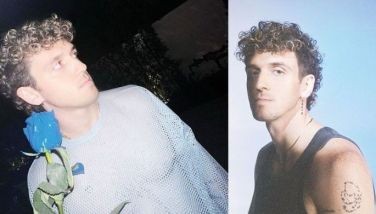Channel 4's glory days
(Second of two parts)
There was no Channel 4 from the time martial law was declared in September 1972 till toward the end of that decade.
Channel 9 had taken over the facilities of ABS-CBN that housed two TV networks (Channels 2 and 4) and seven radio stations. RPN-9 remained the only operating TV station from September to December of that year. Before 1972 could end, Channel 7 was reopened — with a slew of former ABS-CBN programs resurfacing there with the same format and cast, but with a different title. For instance, Wanted: Boarders became Boarding House. Shortly after, Channels 2 and 13 also became operational.
In 1978, Broadcast City was completed and BBC-2, RPN-9 and IBC-13 all moved there. Despite the fact that all three networks were controlled by Marcos and his cronies, an official government station had to be put up. This became Channel 4 that initially had its home base in Arroceros in Manila.
By 1980, Channel 4 had moved to the ABS-CBN complex along Bohol Ave. (now Sgt. Esguerra). It shared the compound with the National Media Production Center.
Channel 4 that time had an impressive lineup of programs. There was this consumerism program hosted by Nanette Franco-Dyco and Julie Amargo that was put up by the Kapisanan ng mga Mamimiling Pilipino, Inc. or KMPI. This afternoon show addressed the complaints of consumers who had bought defective goods.
Another public service program was the Damayan of Rosa Rosal, who was the original female host of Kapwa Ko, Mahal Ko on Channel 7.
A delight to watch was Cecile B. Garrucho’s Tele-aralan, which gave viewers on-air lessons on how to develop or hone further their skills. And so they brought in a headwaiter from the Manila Hotel and he taught the art of table-setting for those who wanted to open a catering business. Of course, there were countless sessions on handicraft-making and basically how to become your own handyman around the house.
To give the public some culture, Channel 4 aired Paco Park Presents (Fridays) and Concert at the Park (Sundays) that was annotated by Tina Monzon-Palma. Never mind that she was with Channel 7 that time. This was the era before the network wars and the time when anchors had impeccable diction and spoke flawless English.
Given this kind of programming, it was understandable that advertisers stayed away from Channel 4. TV is the business of making money. Even in those more civilized times, Filipinos already shied away from entertainment programs with substance.
But what gravely affected the network’s ratings was the fact that programming was pre-empted every time Marcos felt an itch to come out on TV. Tele-aralan may have developed regular following, but would lose it because Marcos and his speeches would interrupt the show and may linger for as long as an hour.
This network had been screwed big-time because it was used as a tool for government propaganda. Sometimes Marcos would also cut into the rest of the networks (Channel 7 had always been the rebellious one — the first, in fact, to fight dictatorship). But the Broadcast City stations still had it easier than Channel 4. Channels 2, 9 and 13 would be allowed to resume regular programming, but not the official government network. Marcos could have been on Channel 4 the whole day and no one from the station could complain.
In 1981, when studio coffers were practically empty, there was an attempt to commercialize Channel 4. It was called Maharlika Broadcasting System or MBS-4. Studio executives also tried to sell to advertisers by making some of the shows more commercially viable. (It only made money when it was the carrying station of PBA.)
They put up a sitcom, for instance, called Dorm Po sa Amin that starred Lloyd Samartino, Cherie Gil and Bambi Arambulo. The format was obviously copied from Three’s Company and not surprisingly flopped in the ratings game.
There was also this noontime show called Con-Todo Pakulo they pitted against Student Canteen and Eat, Bulaga!. As expected, it didn’t last long.
Strangely enough, the one lunchtime fare the station produced that appealed to viewers went on air shortly before the EDSA revolution: The gag show Ito ‘Yun, ang Galing! Led by Bernardo Bernardo, it featured a relatively unknown cast and among them was Ben Tisoy, the dark-skinned comedian, who was so talented I now wonder what become of him.
After the success of EDSA I, of course, there was a total overhauling. Lucky for Mel Tiangco and Korina Sanchez, who were both from MBS-4, they only had to cross corridors when ABS-CBN reopened and took in applicants. For a while, the two networks shared the same building until Channel 4 was relocated to its present site in Visayas Ave.
Channel 4 was again renamed People’s Television or PTV-4. For a while, it had promise: Tina Palma was its news anchor no less. There were also shows that offered substance — like Gerry Geronimo’s agricultural show Ating Alamin.
PTV-4, sadly, was dwarfed by the bigger privately-owned networks Channels 2 and 7. Even the sequestered Channels 9 and 13 did better economically.
Now called National Broadcast Network or NBN-4, it is hardly breathing. Let’s hope that the bill filed by Sen. Loren Legarda to save Channel 4 is passed before the government network finally conks out.
- Latest
- Trending
































